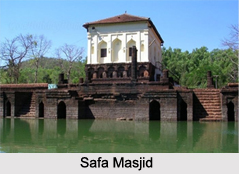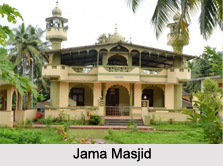 The state of Goa is located in the western part of India. Even though it is India`s smallest state by area and the fourth smallest by population, its varied forms of water bodies has made it popular among travelers. It is important to note that Goa is a diverse state with followers of Christianity, Hinduism as well as Islam. Therefore, apart from churches and temples, this beach state has mosques which are worth visiting. They are symbolic of the secular culture and tradition prevalent in India.
The state of Goa is located in the western part of India. Even though it is India`s smallest state by area and the fourth smallest by population, its varied forms of water bodies has made it popular among travelers. It is important to note that Goa is a diverse state with followers of Christianity, Hinduism as well as Islam. Therefore, apart from churches and temples, this beach state has mosques which are worth visiting. They are symbolic of the secular culture and tradition prevalent in India.
Safa Masjid
The small town of Goa namely, Ponda serves as a home to Safa Masjid. It was constructed in the year 1560 A.D. The Sultan of Bijapur namely, Ibrahim Adil Shah is credited with the establishment of this mosque. It is one of the oldest mosques in Goa. Architecturally, this Masjid is similar to an ancient Portuguese home. The noteworthy aspect of this mosque is a huge laterite stone masonry tank with turquoise waters. It is located within the premises of the mosque. The water tank is known to have over 40 hammams, the construction of which is based on Mihrab style of architecture. Id-Ul-Fitr and Id-Ul-Zuha are the two festivals celebrated in this Masjid. A board at the entrance of the Masjid states Safa Masjid as a national monument under the purview of the Archaeological Survey of India.
Jama Masjid
Jama Masjid is located in Sanguim Taluka of Goa. This mosque has splendid architecture and a dome-shaped structure with minarets on all four sides forms its noteworthy aspect. All the major Islamic festivals are celebrated in this mosque. This mosque is highly respected by the Muslims of Goa. Jama Masjid was renovated in the year 1959.
Surla Taar Mosque
Surla village serves as a home to Surla Taar Mosque. Surla stands for village and Taar means ferry point of the village. This mosque is close to the old ferry point and therefore it is called Surla Taar Mosque. This mosque was built in 1560 AD. A person named Ismail Adil Shah is credited with the establishment of this mosque. A noteworthy aspect of this mosque is its Mihrab arched architecture. Surla Taar Mosque has been declared a protected site by the Department of Archives and Archaeology.
Namazgah
Namazgah is a mosque located on a hill in Bicholim. Mughal Emperor, Akbar is credited with the establishment of this mosque. The tomb of Hazrat Abdullah Khan Shahid in the mosque was visited by Sambhaji, a popular Maratha ruler. For the maintenance of this mosque, Sambhaji had offered grant.





















